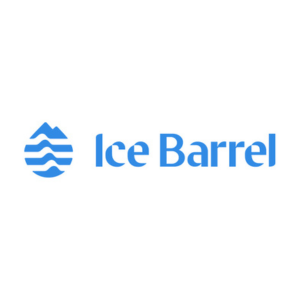Building a Backyard Oasis
with a Cold Plunge Tub
Have you seen people immersing themselves in ice-cold water and wondered why they're so keen on a teeth-chattering experience?
Well, this modern-day trend isn't just a passing internet challenge but a time-honored tradition in Nordic cultures that has been practiced for centuries to promote well-being.
From enhancing immune response and improving circulation to potentially enhancing mental health, the list of cold plunges’ health benefits is as long as it is impressive.
Read on to learn about the fascinating history of cold water immersion, its benefits, and different ways to incorporate it into your routine.
Introducing Cold Plunges
A cold plunge is an immersion in water that’s around or below 50 to 59 degrees Fahrenheit. While most people believe this cold therapy to be a relatively new thing, it dates back to 3500 BC when Roman physicians used to prescribe it for treating a variety of ailments such as skin issues, high fever, and open wounds.
However, it was not until the 19th century that the practice gained scientific interest and wider acceptance worldwide. These days, cold water immersion has evolved into a favored wellness ritual for awakening the senses, recharging the mind, and increasing energy levels.
Cold Plunge Working Mechanism
When you immerse your body in cold water, you induce an acute stress response that triggers a series of physiological responses. Initially, the cold water sends your body into a state of mild shock that activates your sympathetic nervous system, increases your heart rate, and causes hyperventilation.
Sudden cold exposure also constricts blood vessels, helping redirect blood flow from the skin and extremities to protect vital organs and maintain core body temperature. As you pass that initial stage and adjust to the temperature, you start reaping the benefits associated with cold water immersion.
Cold plunges can be done in various ways, such as taking an ice bath at home or jumping into a chilly lake during winter months. However, cold plunge tubs such as Dundalk Leisurecraft Baltic Plunge are one of the most controlled and convenient ways to engage in this practice. These specialized tubs allow you to regulate the water temperature to your preferred settings, making it easier to start with milder temperatures and gradually build your tolerance over time.
Some cold plunge chillers, like Aquavoss Model 2, even come with a Panasonic compressor that helps maintain the desired temperature for longer durations, so you don’t have to worry about adding buckets of ice. The included high-velocity hydrotherapeutic massage jets soothe every knot and tension in your muscles, providing an unparalleled recovery experience.

Benefits of Using a Cold Plunge Tool
The following are some of the benefits of cold plunges:
-
Research shows that cold water immersion increases metabolic activity and stimulates the production of leukocytes and other immune system cells that fight off disease and infection.
-
Ice baths also help shrink your pores and reduce skin inflammation, making your skin look smooth and fresh.
-
Regular exposure to cold water is also known to increase the efficiency of the body's autonomic processes, such as breathing and heart rate, which can improve resilience to stress and disease.
-
Research demonstrates that cold plunge stimulates the release of different neurotransmitters, such as beta-endorphins, noradrenaline, and dopamine, that help improve concentration, uplift mood, and induce pleasure.
-
A 2018 study further reveals that cold hydrotherapy can reduce depressive symptoms and anxiety.
-
Studies explain that cryotherapy helps reduce muscle breakdown and swelling, flush out lactic acid, and aids in post-exercise fatigue recovery, making it beneficial for athletes.
How to Use a Cold Plunge
Taking the cold plunge doesn't have to be an ordeal. Here’s a straightforward guide to making the experience both beneficial and bearable:
-
Ensure your cold plunge chiller is filled with water and chilled to the recommended temperature, usually between 50 to 60 degrees Fahrenheit.
-
Since sudden exposure can be life-threatening, step slowly into the tub to avoid any issues.
-
Once you're in, submerge yourself up to your neck. For beginners, one to three minutes is sufficient. As your tolerance builds, you can extend this time.
-
Your body’s first reaction will be to hold your breath. Instead, breathe deeply. It helps stabilize your heart rate and trick your mind into calming down.
-
When inside, pay attention to your muscles and keep moving them to improve blood flow.
-
After a cold plunge, your body will be a bit numb. Exit the tub slowly to prevent any light-headedness.
-
Allow your body to warm up on its own. If possible, engage in gentle movements or some light stretching to facilitate this process without further shocking your system.
To enhance the experience, consider the Nordic cycle, which involves alternating between hot and cold baths. The easiest way to practice this contrast therapy is to spend 15 to 20 minutes in a hot sauna, followed by one to three minutes in the cold plunge. This rapid temperature change helps invigorate the body, improves circulation, and may aid in muscle recovery.
Our Top Recommended Cold Plunge Tub
If you're looking for a cold plunge tub, you can't go wrong with the following:
Dundalk Leisure Cold Plunge Chiller
The Dundalk Leisure Cold Plunge Chiller 110V is a standout product for those looking to incorporate cold water therapy into their wellness routine. This chiller is designed to be highly practical, featuring a built-in circulation pump and an ozone filter to ensure the water remains clean and fresh. Its robust construction is complemented by convenient castors, making it easily movable to suit any space or preference.
One of the most impressive aspects of the Dundalk Leisure chiller is its ability to cool the water down to a brisk 37 degrees Fahrenheit, providing an authentic cold plunge experience.
Alternatively, it can warm the water up to 104 degrees Fahrenheit, offering versatility for users who might also enjoy a hot soak. This dual functionality makes it an excellent investment for those who value both the invigorating shock of cold water and the soothing embrace of a hot bath.
Users will appreciate the chiller's ease of use and maintenance. The ozone filter is a particularly noteworthy feature, as it helps to reduce the need for frequent water changes, saving time and resources. The chiller's sturdy frame and mobility ensure it can withstand regular use and be positioned as needed, whether that's indoors or out.

FAQs
Can I turn my bathtub into a cold plunge?
Add cold water and ice to convert a bathtub into a cold plunge. However, due to insulation and temperature control challenges, it may not be as effective as specially designed cold plunge pools.
Is it okay to cold plunge every day?
Cold plunging daily is generally safe for most people if done correctly. However, individuals with certain health conditions should consult a healthcare professional before starting.
How do you make a cold water plunge pool?
A DIY cold plunge pool can be made using materials like a stock tank or a sturdy container, adding insulation and ensuring proper drainage and water circulation systems.
What is the cheapest way to make a cold plunge?
The most cost-effective method might involve using a chest freezer, trash can, or plastic stock tank, which can be converted into a cold plunge with minimal additional equipment.
What water is too cold for a cold plunge?
The generally accepted safe temperature range for cold plunges is between 50–60 degrees Fahrenheit.
Do cold plunges burn fat?
Yes, cold plunges can potentially burn fat by activating brown adipose tissue, which increases calorie burning through thermogenesis.
Is a cold plunge better than an ice bath?
Cold plunges are typically more controlled and can reach lower temperatures than ice baths, providing more consistent cold exposure and potentially more benefits.
What is the science behind cold plunges?
The science suggests that cold plunges can reduce inflammation, ease muscle soreness, and trigger the mammalian dive reflex, redirecting blood flow to vital organs and improving circulation.
Final Words
When done right, cold plunge offers a range of health benefits. Thanks to the emergence of cold plunge tubs, it has become easier than ever to try this chilling yet invigorating tradition from the comfort of your own home.
My Sauna World has an amazing selection of cold plunge tubs from reputable brands such as Dundalk Leisurecraft, Frosty Dive, and Aquavoss. Visit our website or contact us for more information.
SIGN UP. SAVE BIG.
Subscribe to be the first to know about our special monthly sauna sales, sent right to your inbox.

About the Author
Adam Fromson
Adam Fromson, co-founder of My Sauna World, loves saunas and their transformative health benefits. With years of experience exploring sauna culture and its impact on health and wellness, Adam is passionate about helping others discover the life-changing benefits of saunas for themselves.
Let customers speak for us
from 386 reviews
Good communication, easy delivery, easy set up, easy operation, great value. Recommended!

We ordered the 4 person barrel sauna and love it! We wanted a little extra space for the 2 of us/guests and it’s great. We could definitely fit 4 people in it if we needed. We use it every single day. It took about 10 weeks to get here because they build it specifically for the order. Putting the barrel together was fairly easy with 2 people. The electrical and the heater definitely required an electrician to install as we could have not done it alone.
We ordered the biggest heater (harvia spirit 8kw) and it heats up the sauna in about 15 mins inside our 40-50° garage. Overall this style of sauna is hotter and you sweat a lot faster than in an infrared sauna. I truly 10/10 recommend!
Pic is of us in the middle of building it.

Took me about 6 hours over 2 evenings to assemble almost all by myself. Had a pro run a new circuit from my panel. Very well made and assembly was straightforward. Heater is well sized and reaches operating temperature in under 30 minutes.

Great sauna very easy to assemble

The salt panel was a great addition to our Madison Sauna. It has excellent grain which is accented by the amazing color lights that glow through the panel. Also when you hit the rocks with a splash of water you can feel the heat bounce off the panel. Great addition if you are considering this option.

We can say enough about Sauna World there customer support is great! Our Pinnacle Sauna from Almost Heaven is epic.

The finish and quality is outstanding and it was quick and easy to assemble.

We are thrilled with our mini pod!! It came well shipped and our friend assembled it in 11 hours! Wow! We cannot wait to get healthy and sauna it up!

Beautiful sauna!!! Much easier than I expected to assemble, took a total of 4 hours. Can't wait to get warm by the pool on those cool evenings. Customer service was excellent..

Purchased a 2 person Almost Heaven barrel sauna and were delighted with the product. The order process was quick and easy, the sauna arrived on-time, installation was simple, following the provided instructions, and the sauna is extremely high quality. We’ve used it daily for over 2 weeks and quite frankly I don’t know how we lived without it. If I had it to do over again I wouldn’t change a thing... except maybe purchasing a 4 person model to easier share with friends!

Great Customer Service and a breeze to put together.Excellent shipping and the Sauna is top notch, couldn’t be happier






























